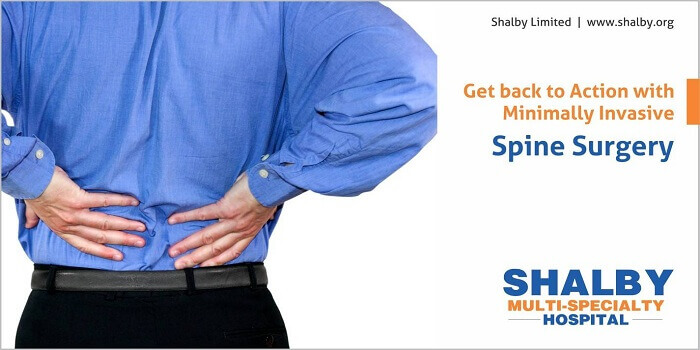
Looking at what sets Minimally Invasive Spine Surgery apart from traditional open surgery
The ‘traditional‘ way of carrying out spine surgery has been ‘open surgery’ where a long incision is used to open the area being operated on, for viewing and accessing the patient’s anatomy. Recent technological advancements have led to the development of minimally invasive surgical procedures for treating back and neck conditions.
In Minimally Invasive Spine Surgery (MISS), surgeons make small incisions instead of long ones like in traditional spine surgery procedures, and specialized instruments are used for accessing the spine. In traditional open surgery, a long incision is made and the muscles are pulled to the side for viewing and accessing the spine. This pulling of the muscle can lead to soft tissue damage, the risk of muscle injury, and a longer recovery period.
In comparison, there is a lesser likelihood of muscle injury in Minimally Invasive Spine Surgery due to the smaller incisions made for viewing and accessing the affected area of the spine. MISS has the advantages of less bleeding and briefer hospital stays. Also, MISS procedures usually require less time to carry out than open surgery, but certain cases may require longer procedures with several incisions.
Special tools called tubular retractors are used for MISS fusions and decompression procedures. Common minimally invasive spine surgeries are MIS Lumbar Diskectomy and MIS Lumbar Fusion. MIS Lumbar Diskectomy refers to the surgical removal of a herniated disk in the lower back that pinches a nerve causing numbness, severe leg pain or weakness. MIS Lumbar Diskectomy relieves these symptoms by surgically removing the herniated disk.
During MIS Lumbar Diskectomy, the surgeon inserts a retractor into a small incision made over where the herniated disk is located, and a small amount of the lamina bone is removed for viewing the disk and the spinal nerve. The nerve is carefully retracted, and the damaged disk is removed and replaced with bone graft material. This technique can also be used for treating herniated disks in the neck, with the procedure being called MIS posterior cervical diskectomy.
In MIS Lumbar Fusion, the disruption of midline ligaments and bone is prevented with a retractor being placed on either side of the patient’s spine. The surgeon uses these two retractors for removing the lamina and the disk, followed by inserting the bone graft into the disk space. Additional support is provided by placing screws or rods. Minimally invasive spinal fusion is also carried out from the side, with the two procedures using a side approach being Direct Lateral Interbody Fusion (DLIF) and Extreme Lateral Interbody Fusion (XLIF).
Hospital stays can be shortened with minimally invasive spine surgery, with patients usually being discharged 2 to 3 days after surgery. As soft tissues and muscles are not disrupted during surgery, post-operative pain is believed to be lesser than that experienced after traditional procedures. For the best results in spine surgery, you should only approach reputed spine clinics like Shalby Hospitals – one of the best spine clinics in Ahmedabad. Minimally Invasive Spine Surgery is definitely a great advancement in surgery, but to make the most of it you will need to approach an experienced and skilled team.
Dr. Niraj B. Vasavada
Consultant & Head of Department
Department of Minimally Invasive and Endoscopic Spine Surgery
Shalby Hospitals – Ahmedabad
Contact: +91 99043 99881
Spine conditions can be crippling. Some spinal conditions can be treated by medications, exercise, and lifestyle changes. The severe conditions, however, require surgical methods. The traditional open surgery accounts for more complications, increased hospital stay, post-surgical pain and pronounced discomfort. This is...
Sciatica is a pain that radiates along the radiate nerve and is experienced in the back, around the hips, and outer or the backside of the leg. This is usually caused due to compression in the sciatic nerve which runs down either...
TYPES OF SPINE SURGERIES Vertebroplasty and Kyphoplasty: These are used to treat compression fractures of the vertebrae caused by osteoporosis. Spinal Laminectomy/Spinal Decompression: This is done when spinal stenosis brings about a narrowing of the spinal canal which results in pain, numbness,...